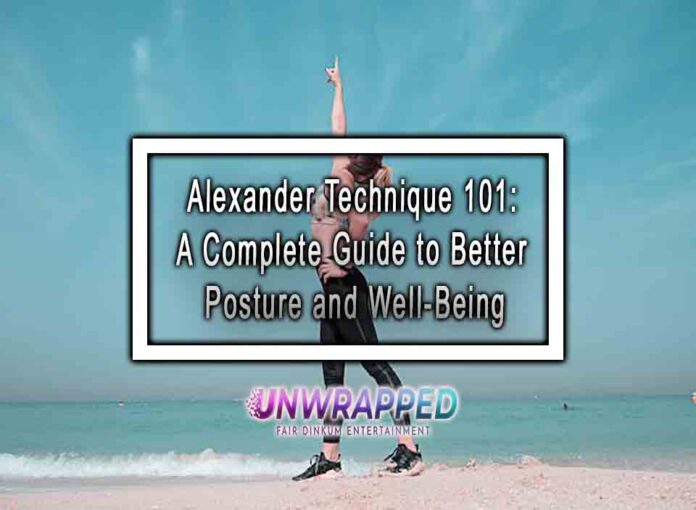Introduction to the Alexander Technique
The Alexander Technique is a holistic practice that helps individuals improve posture, movement, and overall physical well-being. Developed by F.M. Alexander, this discipline focuses on retraining the body to move efficiently and naturally, reducing tension and promoting balance. It has been widely used for addressing issues like chronic pain, respiratory difficulties, and stress-related conditions.
What is the Alexander Technique?
The Alexander Technique is a self-care method designed to teach individuals how to use their bodies more effectively. By fostering awareness of movement and posture, it encourages proper alignment and relaxation, reducing strain on the body.
Core Principles
- Awareness: Recognizing habitual movements that cause unnecessary tension.
- Inhibition: Learning to pause and avoid reacting unconsciously to stimuli.
- Direction: Reorienting movements to align with the body’s natural mechanics.
The method involves hands-on guidance and verbal instructions from certified instructors, helping clients rediscover a sense of ease and balance in daily activities.
The History of the Alexander Technique
Origins
The technique was pioneered by Frederick Matthias Alexander, an Australian actor in the late 19th century. Struggling with chronic voice loss during performances, Alexander began observing his movements and postures, eventually identifying a misalignment between his head, neck, and torso as the root cause.
Key Discoveries
Alexander’s experiments revealed that maintaining a balanced “primary control” of the head and torso allowed for better posture and voice restoration. After years of refining his technique, Alexander not only resolved his voice issues but also developed a comprehensive system for improving overall physical function.
Benefits of the Alexander Technique
1. Pain Relief
The Alexander Technique is particularly effective for managing chronic pain, especially in the back, neck, and shoulders. By correcting posture and reducing tension, it alleviates strain on muscles and joints.
2. Improved Breathing
With better spinal alignment, the diaphragm and lungs function more efficiently, promoting deeper, more natural breathing. This can benefit individuals with asthma, anxiety, or other respiratory issues.
3. Enhanced Performance
Actors, musicians, and athletes often use the Alexander Technique to improve coordination, balance, and stage presence. It helps manage performance anxiety and enhances stamina.
4. Stress Reduction
By fostering awareness and relaxation, the technique is a powerful tool for combating stress, reducing the physical and emotional toll of daily life.
5. Rehabilitation and Recovery
The Alexander Technique supports post-surgical recovery by teaching patients to move and function in ways that minimize strain on healing tissues.
How the Alexander Technique Works
Learning the Technique
Private Lessons
- Sessions typically last 45 minutes.
- Instructors use hands-on guidance to adjust posture and demonstrate proper movements.
- Clients are encouraged to practice regularly between lessons.
Recommended Course
- Most people benefit from 20–30 private lessons to master the technique.
- Sessions build awareness of how to move with less effort and more efficiency.
Self-Practice
- Although lessons are ideal, individuals can learn to incorporate the technique into daily life through observation and mindful practice.
The Role of the Teacher
An Alexander Technique teacher provides:
- Verbal instructions to identify and correct harmful movement habits.
- Hands-on adjustments to demonstrate proper alignment and balance.
Applications of the Alexander Technique
Medical and Therapeutic Uses
- Chronic Pain Management: Reduces tension in muscles and joints.
- Post-Traumatic Stress Disorder (PTSD): Encourages calm and controlled breathing.
- Post-Surgical Rehabilitation: Enhances recovery by promoting efficient movement.
Performance Enhancement
- Actors and Singers: Improves voice projection and stage presence.
- Musicians: Prevents repetitive strain injuries and improves playing technique.
- Athletes: Boosts coordination and reduces the risk of injury.
Key Techniques in the Alexander Method
1. Primary Control
This refers to the relationship between the head, neck, and torso. Proper alignment in these areas allows for more efficient movement.
2. Inhibition of Habitual Responses
By pausing before reacting to stimuli, individuals can break free from harmful movement patterns.
3. Mindful Direction
Giving conscious thought to how movements are performed, such as lengthening the spine or relaxing the shoulders.
The Alexander Technique in Everyday Life
- At Work: Helps reduce strain from prolonged sitting or standing.
- Exercise: Enhances coordination and reduces injury risks during physical activities.
- Daily Activities: Improves posture and ease in tasks like lifting, walking, or bending.
Scientific Evidence Supporting the Alexander Technique
Research Highlights
- A 2008 study published in the British Medical Journal found that the Alexander Technique significantly reduced chronic back pain.
- A systematic review in Complementary Therapies in Medicine reported improvements in breathing, posture, and stress reduction.
Conclusion
The Alexander Technique is a time-tested, holistic approach to improving posture, reducing pain, and enhancing overall well-being. With applications ranging from medical therapy to performance enhancement, it offers a versatile solution for a wide array of challenges. Whether you’re looking to relieve chronic pain or simply move through life with greater ease, the Alexander Technique can be a transformative practice.
References
- Alexander, F.M. (1932). The Use of the Self.
- Little, P. et al. (2008). “Alexander Technique Lessons and Chronic Pain Relief,” British Medical Journal.
- Cacciatore, T.W. et al. (2014). “Postural Changes and Alexander Technique,” Journal of Bodywork and Movement Therapies.
- “Alexander Technique and Rehabilitation,” Complementary Therapies in Medicine.
Also See: Australian Tourist Visa – What Does It Entitle You To Do










